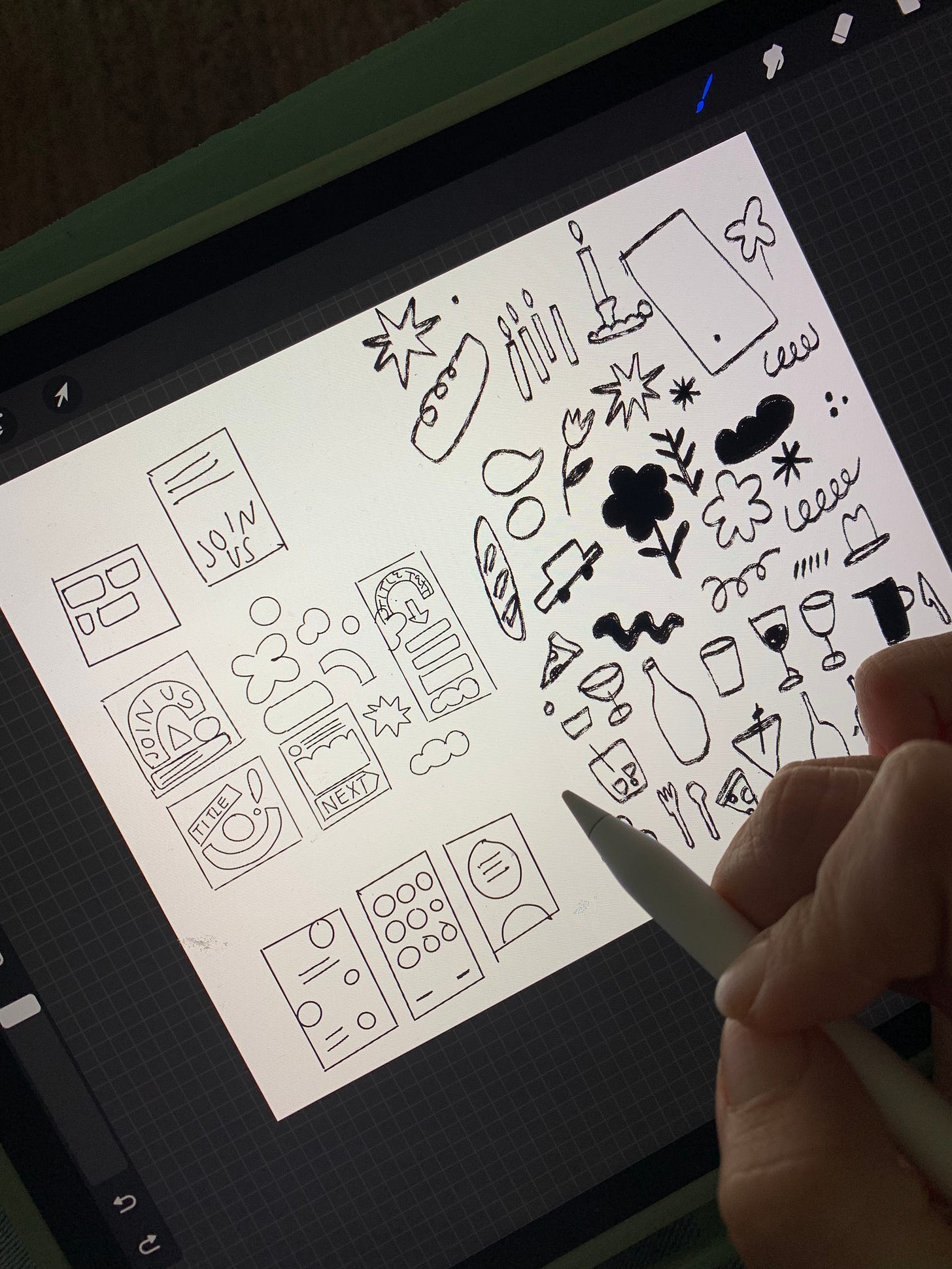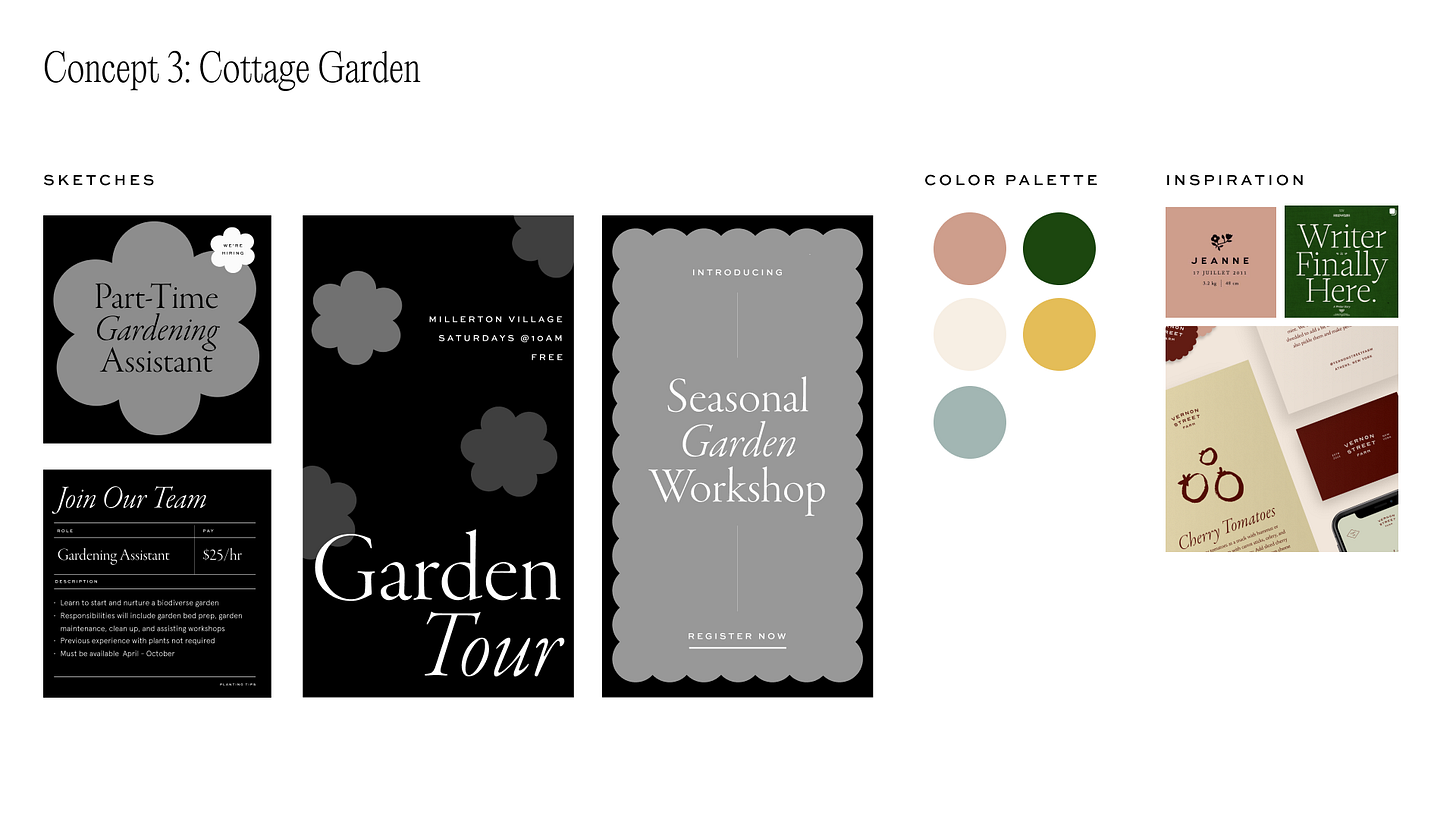Designing for Adobe Express: Part 1
A peek into my design process... in real time 🤠
While I’ve been a designer for 10+ years, I’ve seldom written about my design process.
Over the next few weeks, I’ll be sharing a behind the scenes look at how I approach a client graphic design project. How it starts. How it progresses. How it comes together (or falls apart). This project is currently in the works so I’m writing this without knowing how it will end 😬.
If you’ve ever been curious about how one designer designs, keep on reading.
The Project
A couple of months ago, I was invited to come onboard a project for Adobe: to design a series of templates for their new program, Adobe Express. I’ve had a great experience working with Adobe in the past, so I was excited to work with them again.
The creative brief was quite simple. Deliver “2 Adobe Express templates designed in and for Adobe Express.”
The template designs would have to be easily reusable on Adobe Express
Deliver final design templates in 3 aspect ratios they provided
The process would be as follows:
Concept & Sketches
1st Round of Fully Executed Designs
2nd Round of Fully Executed Designs
Final Delivery
Other than that… I had full creative freedom!
So, with contracts signed this week, I jumped into concepting and sketching.
Brainstorming & Initial Sketches
It’s very unusual that I’m given total visual freedom with a client project. So, I wanted to take advantage of this opportunity to have a little fun and challenge myself creatively.
High level, I wanted to explore 2 different visual concepts for the template designs.
A bold, colorful direction with fun shape and type — a style I naturally gravitate towards
A “sketchy”, analog direction that would allow me to practice drawing and incorporate some hand-drawn elements (I not-so-secretly wish I were a good illustrator)
Creative freedom can be paralyzing at times. So, with a looming deadline, I put some stakes into the ground. Here are some initial inspiration images I pulled onto my artboard to inform my explorations:
On the left, images that I found inspiring for the bold, colorful direction. On the right, inspiration for the hand-drawn direction.
I also thought about the use case of these templates. In my opinion, design differentiates itself from art in that art is about expression while design = problem solving. So what problems would these template designs solve? Why would someone create a graphic on Adobe Express?
Some believable scenarios I came up with. I could see someone using my templates to create a graphic that would:
Tell a story
Invite people to an event
Publicize a job opening
Share a list or roundup
And perhaps, most importantly, I wanted to make sure that these templates were accessible to anyone with a message and could stand on their own visually without the need for photos. In other words, they would need to have visual impact solely through the shapes, type, color, and layout.
With a pretty good idea about the visual directions I wanted to explore and the plausible use cases of these templates, I jumped into some loose sketches on my iPad.
These low fidelity sketches allowed me to have a conversation with myself and translate the ideas I have in my head into something tangible. What shapes and elements do I want to include? What is the hierarchy of these elements? How do they relate to each other on the canvas to create a graphic that feels resolved?
Concepts & Presentation
Once I maxed out my patience on my iPad, I moved onto refining these ideas on my design program of choice: Figma (recently acquired by Adobe).
With the first round of deliverables being “Concepts & Sketches”, my goal was to define and communicate high level concepts and layouts for the Adobe team to respond to.
To be honest, I’ve always have a hard time showing concepts & sketches — ie. work in-progress. My drafts tend to be pretty polished because I find that I myself need to get my work to a certain level of detail to thoroughly explore an idea. I also don’t like to share incomplete ideas with clients for feedback because I’ve found that often leads to confusion and frustration for everyone. So by the time the idea gets ready for presentation and feedback… it gets pretty close to a fully executed design.
For this round, I deliberately tried to keep it loose by working only in black and white and using placeholder fonts. I thought that this would prevent me from getting too hung up on the details and actually meet the deadline (Lord knows I could spend forever tweaking fonts and colors).
Below are the 3 concept I sent over for the Adobe team to review:
Concept 1: “Bold Shapes”
As the name more than suggests, I’m thinking bold shapes, colors, and fonts for an attention grabbing set of templates that feels fun and dynamic.
Concept 2: Soireé Sketch
In contrast to the crisp vector shapes in Concept 1, this direction features hand drawn details (that I pulled in from my iPad sketch!) that bring warmth and soul. This concept felt seasonally appropriate with the holidays around the corner.
Concept 3: Cottage Garden
If you follow my work on instagram, this direction shouldn’t surprise you at all. Scalloped edges. Flowers. I’m all about that cottage core right now. I didn’t see anything like this in the current templates selection on Adobe Express, so I threw this in as a third concept in the 11th hour.
With the template sketches complete, I laid them out in a presentation along with potential color palettes and inspiration images to help communicate my concepts to the Adobe team. I sent them in a PDF along with a video recording of me talking through my thought process like I do for all of my client presentations. If I’ve learned anything in my years of work as a designer, it’s that presentation matters. (More on that in another post).
With the concepts sent off, I now await anxiously for client feedback. And despite having sent off work for client review thousands of times, I still get nervous every time, wondering what they will think and say…
And there you have it! The Part 1 of a behind the scenes look at a real client project in progress. While I’m able to write about my design process as a somewhat linear process, the reality is a lot messier with a lot of grumbling and self-doubt mixed in.
Next post, I’ll be working on incorporating the Adobe team’s feedback, fleshing out these concepts, and building them out on Adobe Express. Stay tuned!
Best,
Do-Hee
*I actually received feedback from the team while writing this post and — sigh of relief — it’s good 🤠







